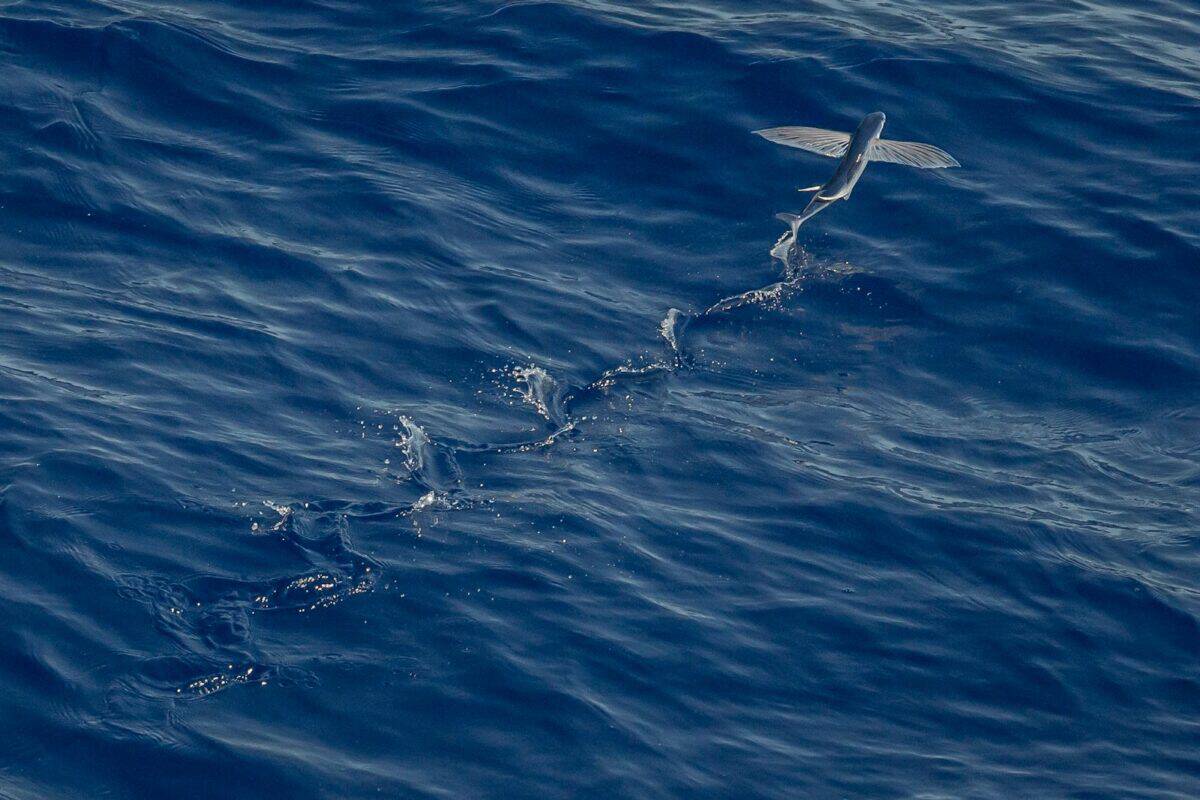The ocean is teeming with creatures that boast strange and wondrous ways of navigating its vastness. Among these marvels, flying fish stand out with their phenomenal ability to glide through the air, transforming mere survival into a breathtaking aerial adventure. Not only do these fish have an intriguing mode of travel, but their adaptations showcase the wondrous ingenuity of evolution. In this article, we delve into how flying fish manage to defy the natural boundaries between water and sky.
Understanding the Phenomenon of Gliding

Flying fish, belonging to the family Exocoetidae, are not truly avian; their flight is more accurately described as a glide. Unlike birds that propel themselves through the air with continuous flapping, flying fish launch themselves out of the water and glide over the surface. This unique behavior helps them evade ocean-bound predators, using the air as a sanctuary from danger.
The Evolutionary Advantage
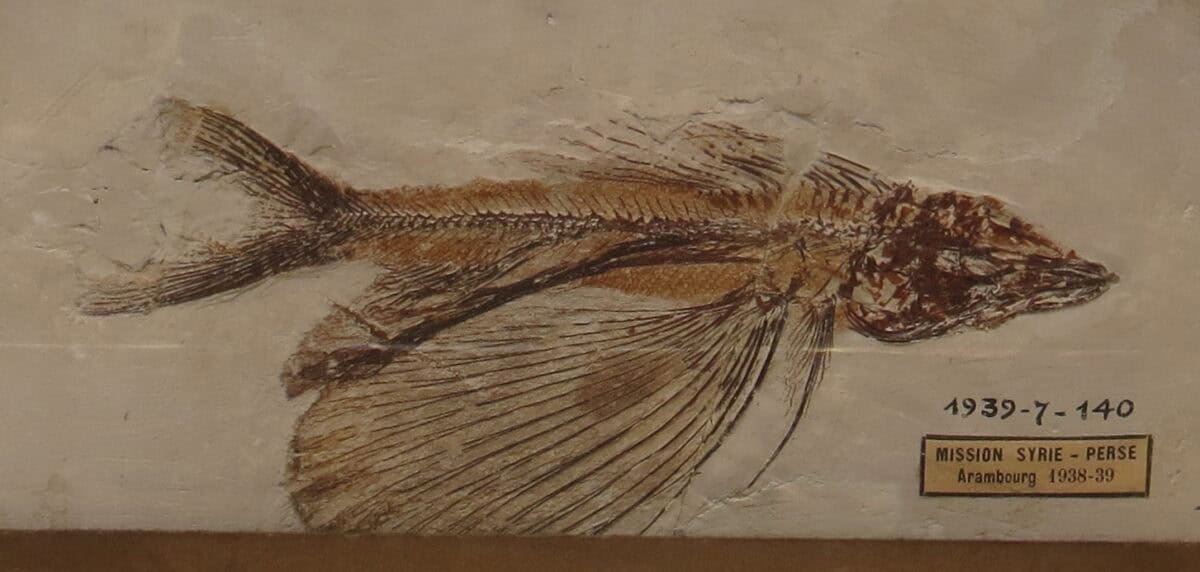
The gliding ability of flying fish is a testament to their evolutionary adaptability. By leaping out of the ocean and gliding, they expand their mobility beyond the aquatic realm. Predators like tuna or marlins, which rely heavily on speed beneath the waves, find it challenging to catch these fish once they take to the skied surface, lending flying fish a crucial reprieve in survival.
Biological Adaptations for Flight
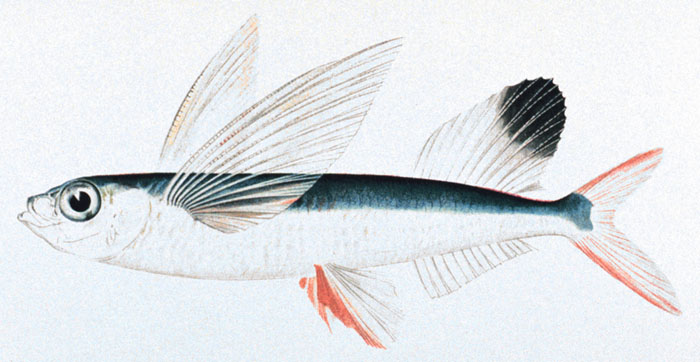
As with any anatomical adaptation in the animal kingdom, the flying fish have evolved special traits to aid their flight. Their fins have developed into large, wing-like appendages, while their bodies are streamlined for both water and air travel. This dual-purpose design effectively reduces friction and enhances speed in both environments, allowing them to lift off the ocean’s surface.
The Mechanics of Their Leap
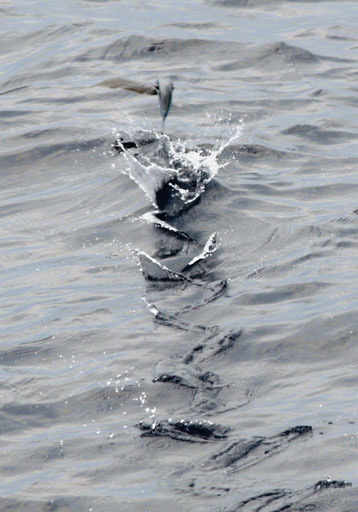
Before taking flight, flying fish must gain significant underwater velocity. They typically achieve speeds of up to 37 miles per hour (60 km/h) by powerful beats of their tail. Once they break the surface, their elongated fins spread, serving as wings which let them glide distances that can reach over 650 feet (198 meters) at a height of up to 20 feet (6 meters) above the water.
Role of Pectoral and Pelvic Fins
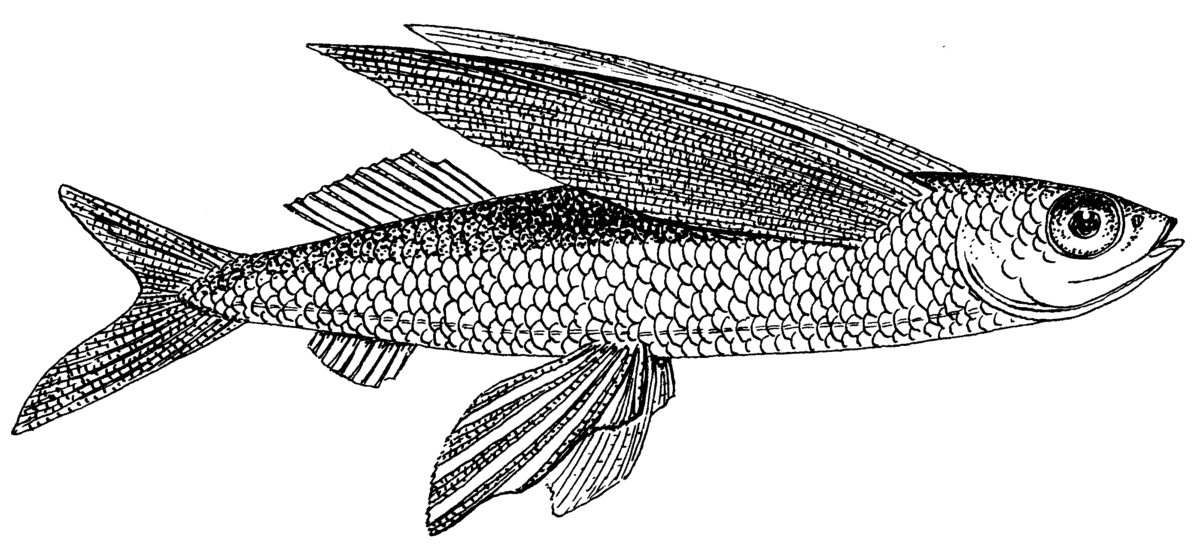
The pectoral fins are crucial in the flight process, acting as the primary wings. Their pelvic fins, especially in species with four-winged capabilities, offer additional lift and stability. This unique configuration allows the flying fish to maintain balance and streamline their body during prolonged glides.
Navigating Ocean Currents and Waves
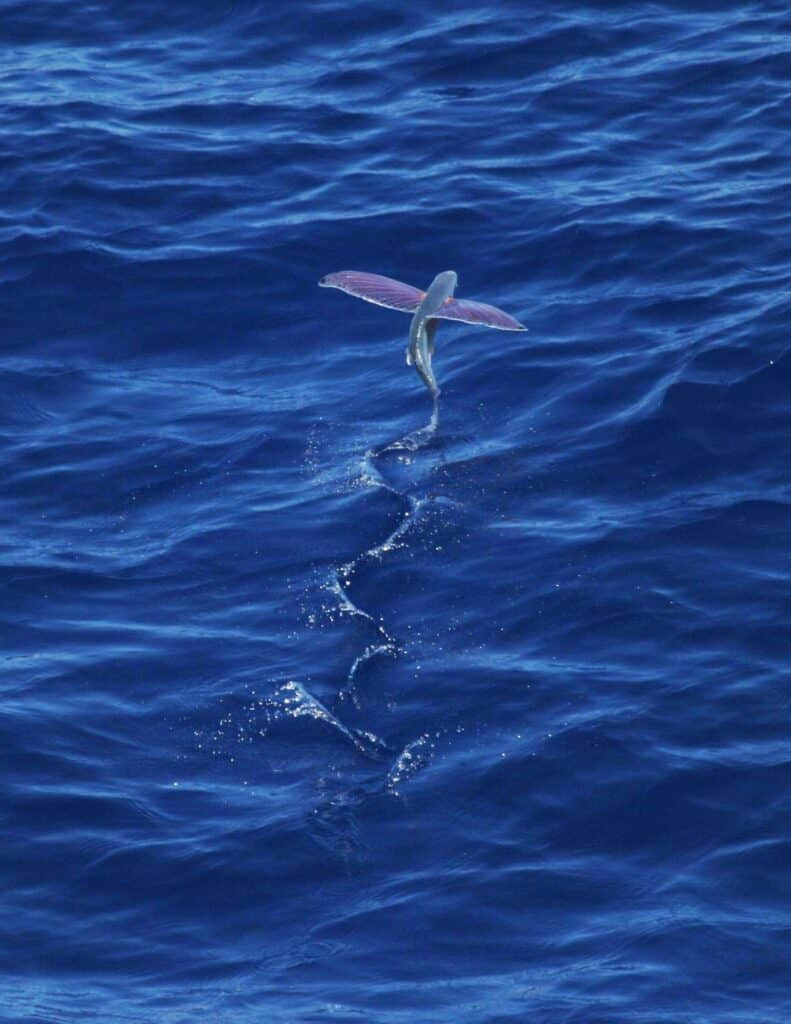
The experience of a flying fish in flight is akin to a sailboat riding the wind. They use the ocean wind currents and waves to their advantage, adjusting wing fins to glide gracefully over wave crests. This strategic use of environmental features is a sophisticated behavior observed in these fascinating fish.
Beyond Flight: The Role of the Tail
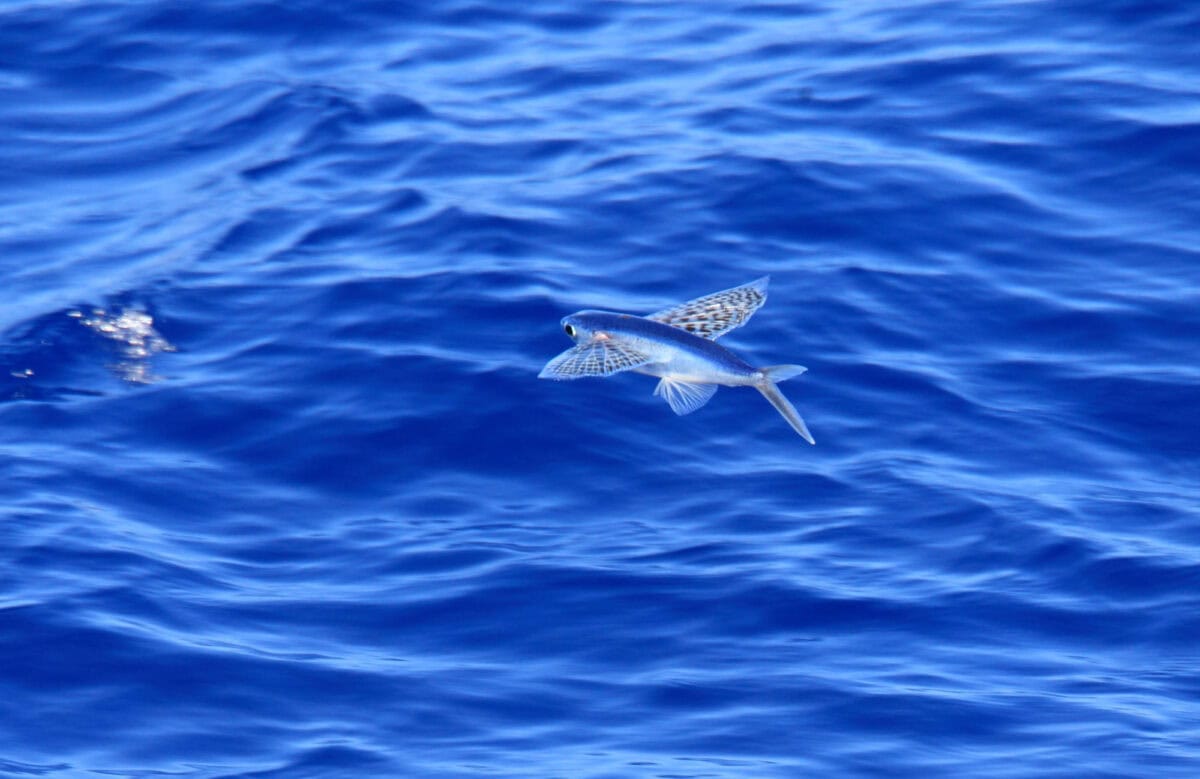
When their flight slows and they approach the water’s surface, flying fish can use a technique known as “taxiing” by dipping their tail into the water to rapidly swish and regain speed, allowing them to relaunch and extend their flight further. This impressive capability often buys them additional time to evade predators.
Ecological Distribution and Habitat
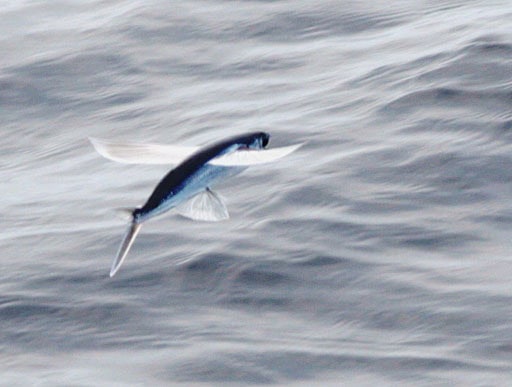
Flying fish predominantly inhabit the warm tropical and subtropical waters of the Atlantic, Pacific, and Indian Oceans. They are most commonly found in these regions where the sun-warmed waters provide the energy-rich environment necessary for their high-speed escapades.
Flight: A Matter of Survival

The evolutionary reason behind the flying fish’s reputed glides is primarily predator evasion. While their flight might seem a serene venture, it is, in fact, a desperate measure for survival, allowing these fish seconds of safety from vigilant pursuers.
Interactions with Humans

Humans have long observed flying fish with awe and fascination, often incorporating them into cultural symbolism and cuisine. Their propensity to leap onto decks of ships has made them part of maritime lore. However, this interaction also extends to fishing practices where they are caught for food.
The Role in Marine Ecosystems

Beyond their spectacular flights, flying fish play a significant role in marine ecosystems as a critical food source for birds, larger fish, and other marine animals. Their existence is an integral piece in the complex food webs of the ocean’s biological communities.
Looking Ahead: Conservation and Future Studies

As with many marine species, flying fish face threats from overfishing and habitat pollution. Conservation efforts are crucial to ensuring their populations remain robust and sustainable. Ongoing research and observation will continue to unlock the secrets of their remarkable adaptations, enriching our understanding of evolutionary biology.
In conclusion, the soaring flights of flying fish are not just nature’s display of beauty but an inspiring saga of survival and adaptability. Their ability to traverse air and sea captures the continuous wonder of evolution, inviting us to explore further into the mysteries they herald in our watery world.
- The Coldest Town in America—And How People Survive There - August 9, 2025
- How Some Birds “Steal” Parenting Duties From Others - August 9, 2025
- 12 Deep-Sea Creatures You Won’t Believe Exist - August 9, 2025

